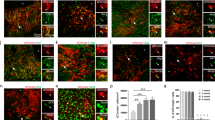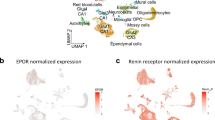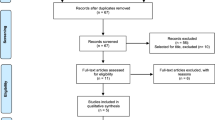Abstract
Neonatal stroke is a condition that leads to disability in later life, and as yet there is no effective treatment. Recently, erythropoietin (EPO) has been shown to be cytoprotective following brain injury and may promote neurogenesis. However, the effect of EPO on functional outcome and on morphologic changes in neonatal subventricular zone (SVZ) following experimental neonatal stroke has not been described. We used a transient focal model of neonatal stroke in P10 rat. Injury was documented by diffusion weighted MRI during occlusion. Immediately upon reperfusion, either EPO (5U/gm) or vehicle was administered intraperitoneally and animals were allowed to grow for 2 wk. Sensorimotor function was assessed using the cylinder rearing test and then brains were processed for volumetric analysis of the SVZ. Stroke induced SVZ expansion proportional to hemispheric volume loss. EPO treatment markedly preserved hemispheric volume and decreased the expansion of SVZ unilaterally. Furthermore, EPO treatment significantly improved the asymmetry of forelimb use following neonatal stroke. This functional improvement directly correlated with the amount of preserved hemispheric volume. These results suggest EPO may be a candidate in the treatment of neonatal stroke.
Similar content being viewed by others
Log in or create a free account to read this content
Gain free access to this article, as well as selected content from this journal and more on nature.com
or
Abbreviations
- EPO:
-
erythropoietin
- MCAO:
-
middle cerebral artery occlusion
- rhEPO:
-
human recombinant erythropoietin
- SVZ:
-
subventricular zone
References
Lynch JK, Nelson KB 2001 Epidemiology of perinatal stroke. Curr Opin Pediatr 13: 499–505
Nelson KB, Lynch JK 2004 Stroke in newborn infants. Lancet Neurol 3: 150–158
Derugin N, Wendland M, Muramatsu K, Roberts TP, Gregory G, Ferriero DM, Vexler ZS 2000 Evolution of brain injury after transient middle cerebral artery occlusion in neonatal rats. Stroke 31: 1752–1761
Mu D, Jiang X, Sheldon RA, Fox CK, Hamrick SE, Vexler ZS, Ferriero DM 2003 Regulation of hypoxia-inducible factor 1alpha and induction of vascular endothelial growth factor in a rat neonatal stroke model. Neurobiol Dis 14: 524–534
Sadamoto Y, Igase K, Sakanaka M, Sato K, Otsuka H, Sakaki S, Masuda S, Sasaki R 1998 Erythropoietin prevents place navigation disability and cortical infarction in rats with permanent occlusion of the middle cerebral artery. Biochem Biophys Res Commun 253: 26–32
Bernaudin M, Marti HH, Roussel S, Divoux D, Nouvelot A, MacKenzie ET, Petit E 1999 A potential role for erythropoietin in focal permanent cerebral ischemia in mice. J Cereb Blood Flow Metab 19: 643–651
Aydin A, Genc K, Akhisaroglu M, Yorukoglu K, Gokmen N, Gonullu E 2003 Erythropoietin exerts neuroprotective effect in neonatal rat model of hypoxic-ischemic brain injury. Brain Dev 25: 494–498
Brines ML, Ghezzi P, Keenan S, Agnello D, de Lanerolle NC, Cerami C, Itri LM, Cerami A 2000 Erythropoietin crosses the blood-brain barrier to protect against experimental brain injury. Proc Natl Acad Sci U S A 97: 10526–10531
Siren AL, Fratelli M, Brines M, Goemans C, Casagrande S, Lewczuk P, Keenan S, Gleiter C, Pasquali C, Capobianco A, Mennini T, Heumann R, Cerami A, Ehrenreich H, Ghezzi P 2001 Erythropoietin prevents neuronal apoptosis after cerebral ischemia and metabolic stress. Proc Natl Acad Sci U S A 98: 4044–4049
Matsushita H, Johnston MV, Lange MS, Wilson MA 2003 Protective effect of erythropoietin in neonatal hypoxic ischemia in mice. Neuroreport 14: 1757–1761
Kumral A, Ozer E, Yilmaz O, Akhisaroglu M, Gokmen N, Duman N, Ulukus C, Genc S, Ozkan H 2003 Neuroprotective effect of erythropoietin on hypoxic-ischemic brain injury in neonatal rats. Biol Neonate 83: 224–228
Sun Y, Zhou C, Polk P, Nanda A, Zhang JH 2004 Mechanisms of Erythropoietin-induced Brain Protection in Neonatal Hypoxia-Ischemia Rat Model. J Cereb Blood Flow Metab 24: 259–270
Wen TC, Rogido M, Genetta T, Sola A 2004 Permanent focal cerebral ischemia activates erythropoietin receptor in the neonatal rat brain. Neurosci Lett 355: 165–168
Sola A, Rogido M, Genetta T, Wen TC 2004 Erythropoietin prevents brain injury in neonatal rats with focal cerebral ischemia. Pediatr Res 55: 434A
Kumral A, Uysal N, Tugyan K, Sonmez A, Yilmaz O, Gokmen N, Kiray M, Genc S, Duman N, Koroglu TF, Ozkan H, Genc K 2004 Erythropoietin improves long-term spatial memory deficits and brain injury following neonatal hypoxia-ischemia in rats. Behav Brain Res 153: 77–86
Shingo T, Sorokan ST, Shimazaki T, Weiss S 2001 Erythropoietin regulates the in vitro and in vivo production of neuronal progenitors by mammalian forebrain neural stem cells. J Neurosci 21: 9733–9743
Wang L, Zhang Z, Wang Y, Zhang R, Chopp M 2004 Treatment of stroke with erythropoietin enhances neurogenesis and angiogenesis and improves neurological function in rats. Stroke 35: 1732–1737
Lois C, Garcia-Verdugo JM, Alvarez-Buylla A 1996 Chain migration of neuronal precursors. Science 271: 978–981
Arvidsson A, Collin T, Kirik D, Kokaia Z, Lindvall O 2002 Neuronal replacement from endogenous precursors in the adult brain after stroke. Nat Med 8: 963–970
Parent JM, Vexler ZS, Gong C, Derugin N, Ferriero DM 2002 Rat forebrain neurogenesis and striatal neuron replacement after focal stroke. Ann Neurol 52: 802–813
Levison SW, Rothstein RP, Romanko MJ, Snyder MJ, Meyers RL, Vannucci SJ 2001 Hypoxia/ischemia depletes the rat perinatal subventricular zone of oligodendrocyte progenitors and neural stem cells. Dev Neurosci 23: 234–247
Skoff RP, Bessert DA, Barks JD, Song D, Cerghet M, Silverstein FS 2001 Hypoxic-ischemic injury results in acute disruption of myelin gene expression and death of oligodendroglial precursors in neonatal mice. Int J Dev Neurosci 19: 197–208
Plane JM, Liu R, Wang TW, Silverstein FS, Parent JM 2004 Neonatal hypoxic-ischemic injury increases forebrain subventricular zone neurogenesis in the mouse. Neurobiol Dis 16: 585–595
Hagberg H, Bona E, Gilland E, Puka-Sundvall M 1997 Hypoxia-ischaemia model in the 7-day-old rat: possibilities and shortcomings. Acta Paediatr Suppl 422: 85–88
Derugin N, Ferriero DM, Vexler ZS 1998 Neonatal reversible focal cerebral ischemia: a new model. Neurosci Res 32: 349–353
Grow JL, Liu YQ, Barks JD 2003 Can lateralizing sensorimotor deficits be identified after neonatal cerebral hypoxia-ischemia in rats?. Dev Neurosci 25: 394–402
Schallert T, Fleming SM, Leasure JL, Tillerson JL, Bland ST 2000 CNS plasticity and assessment of forelimb sensorimotor outcome in unilateral rat models of stroke, cortical ablation, parkinsonism and spinal cord injury. Neuropharmacology 39: 777–787
Regeur L, Pakkenberg B 1989 Optimizing sampling designs for volume measurements of components of human brain using a stereological method. J Microsc 155: 113–121
Paxinos G 1986 The Rat Brain in Stereotaxic Coordinates. Academic Press, San Diego, CA
Bracken CP, Whitelaw ML, Peet DJ 2003 The hypoxia-inducible factors: key transcriptional regulators of hypoxic responses. Cell Mol Life Sci 60: 1376–1393
Sharp FR, Bernaudin M 2004 HIF1 and oxygen sensing in the brain. Nat Rev Neurosci 5: 437–448
Digicaylioglu M, Lipton SA 2001 Erythropoietin-mediated neuroprotection involves cross-talk between Jak2 and NF-kappaB signalling cascades. Nature 412: 641–647
Chong ZZ, Kang JQ, Maiese K 2002 Erythropoietin is a novel vascular protectant through activation of Akt1 and mitochondrial modulation of cysteine proteases. Circulation 106: 2973–2979
Grasso G, Sfacteria A, Cerami A, Brines M 2004 Erythropoietin as a tissue-protective cytokine in brain injury: what do we know and where do we go?. Neuroscientist 10: 93–98
Manabat C, Han BH, Wendland M, Derugin N, Fox CK, Choi J, Holtzman DM, Ferriero DM, Vexler ZS 2003 Reperfusion differentially induces caspase-3 activation in ischemic core and penumbra after stroke in immature brain. Stroke 34: 207–213
Dzietko M, Felderhoff-Mueser U, Sifringer M, Krutz B, Bittigau P, Thor F, Heumann R, Buhrer C, Ikonomidou C, Hansen HH 2004 Erythropoietin protects the developing brain against N-methyl-D-aspartate receptor antagonist neurotoxicity. Neurobiol Dis 15: 177–187
Murray M, Kim D, Liu Y, Tobias C, Tessler A, Fischer I 2002 Transplantation of genetically modified cells contributes to repair and recovery from spinal injury. Brain Res Brain Res Rev 40: 292–300
DeBow SB, Davies MLA, Clarke HL, Colbourne F 2003 Constraint-induced movement therapy and rehabilitation exercises lessen motor deficits and volume of brain injury after striatal hemorrhagic stroke in rats. Stroke 34: 1021–1026
Karhunen H, Virtanen T, Schallert T, Sivenius J, Jolkkonen J 2003 Forelimb use after focal cerebral ischemia in rats treated with an alpha 2-adrenoceptor antagonist. Pharmacol Biochem Behav 74: 663–669
Biernaskie J, Chernenko G, Corbett D 2004 Efficacy of rehabilitative experience declines with time after focal ischemic brain injury. J. Neurosci 24: 1245–1254
Felt BT, Schallert T, Shao J, Liu Y, Li X, Barks JD 2002 Early appearance of functional deficits after neonatal excitotoxic and hypoxic-ischemic injury: fragile recovery after development and role of the NMDA receptor. Dev Neurosci 24: 418–425
Lie DC, Song H, Colamarino SA, Ming GL, Gage FH 2004 Neurogenesis in the adult brain: new strategies for central nervous system diseases. Annu Rev Pharmacol Toxicol 44: 399–421
Aberg MA, Aberg ND, Hedbacker H, Oscarsson J, Eriksson PS 2000 Peripheral infusion of IGF-I selectively induces neurogenesis in the adult rat hippocampus. J Neurosci 20: 2896–2903
Pencea V, Bingaman KD, Wiegand SJ, Luskin MB 2001 Infusion of brain-derived neurotrophic factor into the lateral ventricle of the adult rat leads to new neurons in the parenchyma of the striatum, septum, thalamus, and hypothalamus. J Neurosci 21: 6706–6717
Kerschensteiner M, Stadelmann C, Dechant G, Wekerle H, Hohlfeld R 2003 Neurotrophic cross-talk between the nervous and immune systems: implications for neurological diseases. Ann Neurol 53: 292–304
Leist M, Ghezzi P, Grasso G, Bianchi R, Villa P, Fratelli M, Savino C, Bianchi M, Nielsen J, Gerwien J, Kallunki P, Larsen AK, Helboe L, Christensen S, Pedersen LO, Nielsen M, Torup L, Sager T, Sfacteria A, Erbayraktar S, Erbayraktar Z, Gokmen N, Yilmaz O, Cerami-Hand C, Xie QW, Coleman T, Cerami A, Brines M 2004 Derivatives of erythropoietin that are tissue protective but not erythropoietic. Science 305: 239–242
Romanko MJ, Rothstein RP, Zevison SW 2004 Neural stem cells in the subventricular zone are resilient to hypoxia/ischemia whereas for progenitors are vulnerable. J Cereb Blood Flow Metab 24: 814–825
Author information
Authors and Affiliations
Corresponding author
Additional information
Supported by a grant (NS 35902) from Johnson & Johnson Pharmaceutical Research and Development (Raritan, NJ), and by Sungkyunkwan University School of Medicine and Samsung Medical Center, Seoul, Korea 50 I/won-dong, Kangnon-ku 135–710.
Rights and permissions
About this article
Cite this article
Chang, Y., Mu, D., Wendland, M. et al. Erythropoietin Improves Functional and Histological Outcome in Neonatal Stroke. Pediatr Res 58, 106–111 (2005). https://doi.org/10.1203/01.PDR.0000163616.89767.69
Received:
Accepted:
Issue date:
DOI: https://doi.org/10.1203/01.PDR.0000163616.89767.69
This article is cited by
-
Promoting neuroregeneration after perinatal arterial ischemic stroke: neurotrophic factors and mesenchymal stem cells
Pediatric Research (2018)
-
Erythropoietin monotherapy in perinatal asphyxia with moderate to severe encephalopathy: a randomized placebo-controlled trial
Journal of Perinatology (2017)
-
Galectin-1-secreting neural stem cells elicit long-term neuroprotection against ischemic brain injury
Scientific Reports (2015)
-
Effects of combination therapy using hypothermia and erythropoietin in a rat model of neonatal hypoxia–ischemia
Pediatric Research (2013)
-
Hypothermia and erythropoietin for neuroprotection after neonatal brain damage
Pediatric Research (2013)



